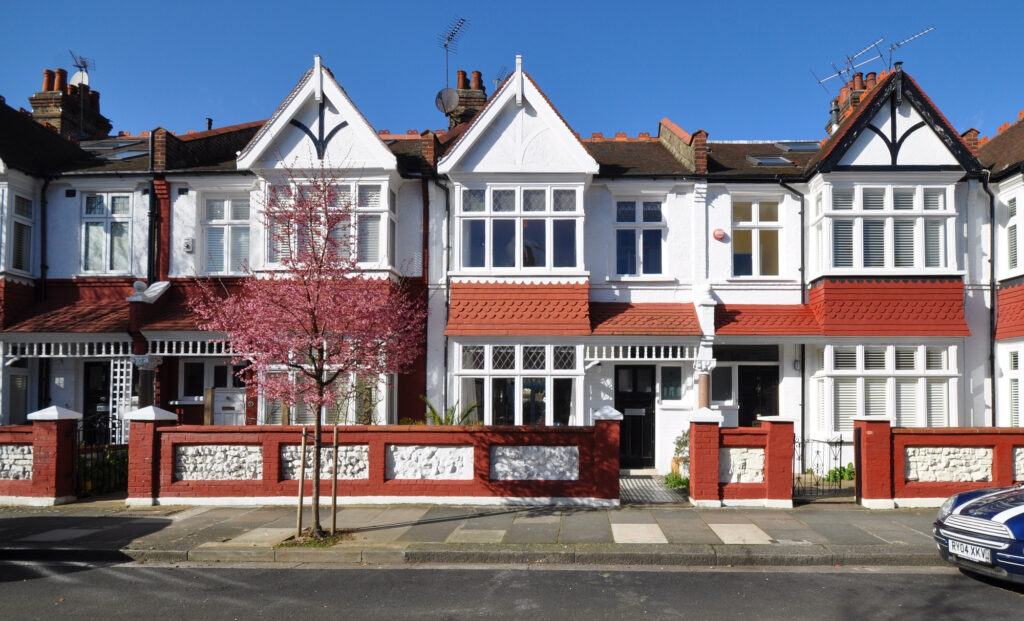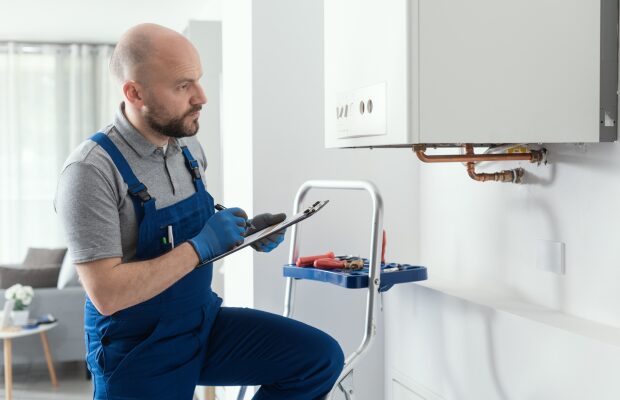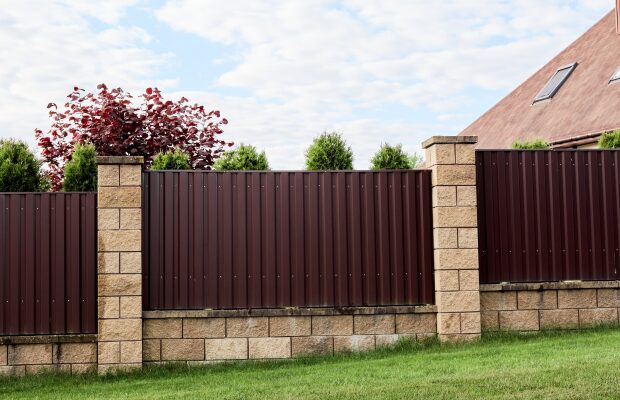One thing homebuyers and renters frequently cite as a ‘must have’ is character.
And with the UK packed full of amazing period properties, there are some great options to choose from.
However, there’s lots to consider before buying a period home, and this guide explores the different kinds of period property available and what you should look for…
What is classed as a period property?
A ‘period’ home, generally, refers to a property that was built before the First World War.
You’ll also have heard the terms ‘Victorian’, ‘Edwardian’ and ‘Georgian’ when people talk about period houses and this refers to the ruling monarch when a property was built.
Queen Victoria ruled between 1837 and 1901 and Edward VII between 1901 and 1910.
The Georgian era was much longer, thanks to four successive kings bearing the name George – George I (1714-1727), George II (1727-1760), George III (1760-1820) and George IV (1820-1830).
Buying a period property: Why are they so popular?
Despite the passing of time, particularly since the Georgian era, there are still millions of period properties standing strong in the UK.
And their popularity shows no sign of waning, either.
Their styles have stood the test of time and the popularity of vintage and nostalgia has seen period properties grow in value far more than more modern homes.
But it’s not just aesthetics that keep period property high on the wish lists of buyers.
You may have heard someone refer to an older property as a ‘solid house’.
And they’d be right.
Back in the Georgian, Victorian and Edwardian eras, good quality building materials and land were more readily available and, as such, period properties tend to have larger rooms and a much more superior build quality, including thicker walls.
After all, they’re still standing despite their many years and despite all that wear and tear.
Are period properties worth more?
The popularity of period properties often means buyers will pay a premium to purchase a good one.
Period homes also hold their value well, too, while additional value can be added through good renovation work and restoration of period features.
What are period features in a house?
Period features refer to the original fixtures of a property that remain in place today.
Period features often include:
- Ornate fireplaces
- Decorative wood or tiled flooring
- Moulded coving, ceiling roses and door surrounds
- Sash windows
- High skirting boards
- Wall panelling
- Stained glass windows
- Mock Tudor wooden cladding
What is each period property’s style?
All period properties are known for their unique style, depending on the era they were constructed.
Here are the most common types of period home in the UK and what you can expect to see when viewing them…
1. Georgian properties
If you like your properties in proportion, then that is one of many reasons why you should consider a Georgian property.
Formulaic and symmetrical, Georgian properties usually boast tall windows and are often built in identical rows.
Some of the best Georgian properties, for instance, have huge, heavy black main doors framed by white stucco-rendered pillars.
These types of property were largely built during the Regency period, which was the final nine years of the Georgian reign when George IV was Prince Regent.
2. Victorian properties
Despite its popularity with buyers today for its style, Victorian homes were generally built out of necessity than art.
Between 1841 and 1901, the population of the UK more than doubled.
And that meant a huge rise in space-saving terraced homes simply to house the burgeoning numbers on UK soil.
Once the brick tax, which held back builders until 1850, was removed, construction of homes started with smaller bricks and large bay windows – common with the remaining Victorian properties today.
Interior Victorian features at the time focused on ornate fireplaces, skirting boards and coving and these are very much the features to look out for today if you’re looking to buy a Victorian home.
3. Edwardian properties
Edward VII was bold and extroverted, so the boom in house building between 1901 and 1910 very much reflects his style.
Edwardian house style is generally wider than Victorian homes, with larger gardens for parties.
The properties were generally built with style in mind rather than the practical focus of the Victorian era.
Sometimes set back from roads with front gardens (unlike Victorian terraces), many Edwardian style properties also made use of porches for additional privacy, while also bringing in more windows and wider hallways and rooms.
More wood was also used for styling, with parquet flooring inside and faux Tudor cladding on the outside.
How do you maintain a period property?
Period properties can be more maintenance-intensive than newer homes – simply because they’re older.
The two most common upgrades required when you buy a period property, meanwhile, are:
1. Electrical rewiring
When many of these properties were first built, especially Georgian and early Victorian homes, artificial light came from oil lamps and gas lighting.
That means the wiring in many period homes is very dated and often requires a lot of work to bring it up to modern-day standards.
2. Heating and insulation
Heating systems are often outdated in period homes.
And insulation can, sometimes, be non-existent.
When buying a period property, factor in the potential costs of adding a modern heating system and upgrading or installing good wall and roof insulation.
New windows may also need to be factored into your budget, with original period windows often very poor at keeping heat in.
Maintaining or refreshing original features
When buying a period home, you should also try to retain the main features of the property’s era.
Victorian homes, for example, often have stunning ornate fireplaces, which can not only add real character to the property but can also help it hold its value.
If your property’s period charm is waning, and features are looking a little worse for wear, it can be tempting to remove them.
But a short hunt around a salvage yard can often yield some period gems, meaning you can replace like for like and maintain the lovely character of your period home.
Don’t be afraid to mix up modern with traditional, either.
Most period homes boast high ceilings, so make use of them with bold lighting statements.
For Victorian homes, don’t be afraid to go darker with paintwork – a gothic feel can really bring out period features like fireplaces and ornate coving (which should remain white).
Finally, period properties tend to have many small nooks and crannies that can make great storage solutions.
For instance, the space either side of a Victorian or Edwardian fireplace can make a great space for a small library – and it will look fantastic too.
What to look out for when viewing a period property to buy
Buying a period property is a big decision and there are several key things you should look out for on a viewing.
1. Damp problems
Period homes can sometimes suffer with damp problems.
Damp-proof courses weren’t introduced into construction until 1875, so properties built before this date may not have a course at all.
And those homes constructed in the late 1800s and early 1900s may have an ageing or damaged course – leading to potential issues with rising damp.
When viewing a period property, keep an eye out for:
- Brown marks or discolouration on walls
- Signs of mould on walls and ceilings
- Bubbling plaster or wallpaper that is peeling away
2. Poor energy efficiency
Roof and wall insulation in period homes is often not up to the standards of modern housebuilding – unless a previous owner has had work carried out.
Original windows, too, can leak heat, while Victorian properties, in particular, often lack roof insulation.
Have a look at the property’s Energy Performance Certificate (EPC), which should reveal just how efficient it is and what can be done to improve it.
3. Strange layouts
The needs of people in the 1800s and 1900s were very different to the needs of buyers today.
So, it’s common to find period homes with quirky or strange layouts and you should always factor this when on a viewing.
For example, some older properties have bathrooms that are accessed via the kitchen downstairs – something that is almost unheard of in more modern properties.
4. Is the property listed, or in a Conservation Area?
Many period properties are Grade II listed, meaning there are limitations on work that can be done on them.
Period homes in Conversation Areas, too, may be protected by Article 4 directions that mean planning permission may be required for work that would normally fall under permitted development.
Always do your research to find out the status of a period home before viewing it and speak to the estate agent marketing the property if you’re unsure.
Period property surveys
Rule number one when buying a period home is to have a full survey carried out after your offer has been accepted – this should flag up any major issues or provide you with peace of mind that the property is in good condition.







